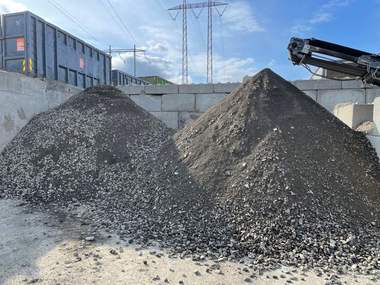Waste recycling infrastructure
A new project, backed by the Eco-Innovation Fund from the European Union will be operating in Germany from May 2014 with the aim of enhancing the infrastructure for the recycling of construction, demolition and excavation waste in Europe.
The project is a partnership between materials washing specialists, CDE Global and the Eco-Innovation Fund and will see the introduction of a new construction, demolition and excavation waste recycling system which will deliver on a number of key objectives including reduced plant footprint, enhanced mobility and an increased return on investment from CD&E waste recycling operations. The Eco-Innovation Fund supports environmental technologies that have been introduced extensively in one EU member state but have not as yet been widely adopted throughout the European Union. CDE Global identified an opportunity through this programme as a result of the experience they have gained in the CD&E waste recycling market in the UK over the last 10 years.
“We currently have more than 20 plants operating in the UK and the combined diversion from landfill on a yearly basis is over 5 million tonnes” explains Marc Jennings, Programme Manager at CDE for this project. “The Eco-Innovation project presents us with a unique opportunity to introduce a number of innovations to the CD&E waste recycling process and will hopefully lead to more widespread adoption of this technology throughout the European Union.”
The project will operate under the acronym of “CANDY” which stands for “CompAct, highly mobile, Next generation, CD&E waste recoverY system”. The technical objectives of the project include enhanced mobility and reduced plant footprint for the CD&E waste recycling plant as well as increasing the quality of the washed recycled sand and aggregate products (Fig. 1). However, the most significant technical objective of the project is to offer new sludge management technology with a specific focus on maximising the recovery of process water for recirculation to the washing plant.
“This is a project which will demonstrate the business case for the environmental technologies that we manufacture” explains Marc Jennings. “This is the primary motivation for the substantial investment in R&D that we have made in order to complete the project – but the environmental benefits that will result from CANDY are hard to ignore.” Among the main environmental benefits outlined by Marc Jennings are:
A reduction in water consumption from the CD&E waste processing plant
Maximum water recycling for recirculation to the washing plant with early results showing that a minimum of 91 % can be achieved
Maximum material recovery from CD&E waste and minimal waste resulting in a reduced requirement to transport and dispose of waste material
An increase in the share of the aggregates market made up from recycled sand and aggregates – reducing pressure on natural reserves and providing a sustainable solution to long term aggregate supply
There are also a number of commercial objectives which CDE will deliver through CANDY. One of the most significant of these for those involved in the processing of CD&E waste is a reduction in the production cost for recycled sand and aggregates and an overall reduction in the capital investment required to set up a washing plant for CD&E waste material (Fig. 2). “Through the technology we have introduced to the UK market over the last decade it is now accepted that washing technologies present the best means of achieving this. CANDY will demonstrate to a wider audience throughout Europe that our suite of modular equipment allows for production of the highest quality recycled products at the lowest cost of production”, explains Marc Jennings.
All of the equipment for the CANDY project is now ready to leave the CDE factory and is bound for the Stuttgart area in South West Germany. The new plant will be operational by the end of May 2014 and an open week will be hosted at the site where potential customers, EU representatives, members of CD&E waste recycling associations and other interested stakeholders will visit the site to watch the new technology in action. The plant will be located on an existing CD&E waste processing facility operated by Fees Heinrich GmbH. The company is one of the most well known in the C&D waste recycling business in Germany having been in operation for over 60 years and currently operate 3 waste processing facilities in the Stuttgart area. The connection between CDE and Walter Fees was made at the bauma exhibition in Munich during 2013 and it was very clear that it was a good opportunity for partnership given the philosophy of both companies.








